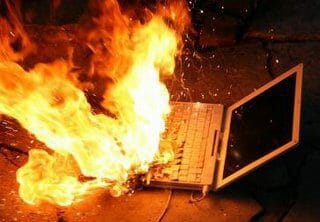

Wet chemical of Class K extinguishers were developed for modern, high efficiency deep fat fryers in commercial cooking operations. Wet Chemical is a new agent that extinguishes the fire by removing the heat of the fire triangle and prevents re-ignition by creating a barrier between the oxygen and fuel elements. It is important to use the correct extinguisher for the type of fuel! Using the incorrect agent can allow the fire to re-ignite after apparently being extinguished successfully. Ordinary dry chemical is for Class B & C fires only. This agent also works by creating a barrier between the oxygen element and the fuel element on Class A fires. Dry Chemicalĭry Chemical fire extinguishers extinguish the fire primarily by interrupting the chemical reaction of the fire triangle.Today's most widely used type of fire extinguisher is the multipurpose dry chemical that is effective on Class A, B, and C fires. They are usually ineffective on Class A fires.

Carbon DioxideĬarbon Dioxide fire extinguishers extinguish fire by taking away the oxygen element of the fire triangle and also be removing the heat with a very cold discharge.Ĭarbon dioxide can be used on Class B & C fires. The discharge stream could spread the flammable liquid in a Class B fire or could create a shock hazard on a Class C fire. Water extinguishers are for Class A fires only - they should not be used on Class B or C fires. Foam agents also separate the oxygen element from the other elements. Water and Foam fire extinguishers extinguish the fire by taking away the heat element of the fire triangle. Others have warnings where it would be dangerous for the operator to use a particular fire extinguishing agent. Some types of fire extinguishing agents can be used on more than one class of fire. Class KĬlass K fires are fires in cooking oils and greases such as animals fats and vegetable fats. Class DĬlass D fires are fires in combustible metals such as potassium, sodium, aluminum, and magnesium. Remove the power and the Class C fire becomes one of the other classes of fire. Class CĬlass C fires are fires involving energized electrical equipment such as motors, transformers, and appliances. Class B fires do not include fires involving cooking oils and grease. Class B fires also include flammable gases such as propane and butane. Class BĬlass B fires are fires in flammable liquids such as gasoline, petroleum oil and paint. Types & Applications Class AĬlass A fires are fires in ordinary combustibles such as wood, paper, cloth, trash, and plastics. Always monitor operations to avoid excessive heat.įlash Point – The lowest temperature at which a material can vaporize to form an ignitable mixture in air.īoiling Point –The temperature at which a given material changes from liquid to gas. Remember to keep storage of fuel and oxidizers to a minimum and away from the other elements. Together, these four elements are represented by the fire tetrahedron. Fuel, heat, and an oxidizer (typically oxygen in air) combine to create a sustained combustion chemical reaction. Elements of Combustion:īasic fire prevention involves separating the elements that contribute to combustion. Inhaling the super- hot air can sear your lungs. Fire is HOT.Heat and smoke from fire can be more dangerous than the flames.Asphyxiation is the leading cause of fire deaths, exceeding burns by a three- to- one ratio. Instead of being awakened by a fire, you may fall into a deeper sleep. Fire produces gases that make you disoriented and drowsy. In five minutes, a residence can be engulfed in flames. In just two minutes, a fire can become life-threatening. In order to protect yourself, it isimportant to understand the basic characteristics of fire. Intentionally set structure fires resultedin an estimated $664 millionin property damage. Direct loss due to fires is estimated at nearly $8.6 billion annually. Eighty three percent of all civilian fire deaths occurred in residences.Many of these fires could have been prevented.Ĭooking is the third leading cause offire deaths and the leading causeof injury among people ages 65 and older. Each year, more than 4,000 Americans die in fires, more than 25,000 are injured in fires, and more than 100 firefighters are killed while on duty.


 0 kommentar(er)
0 kommentar(er)
